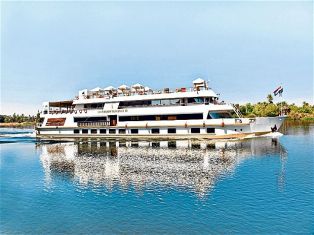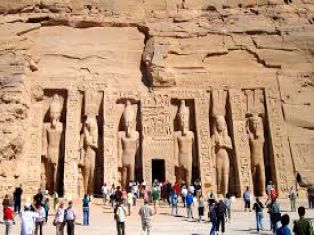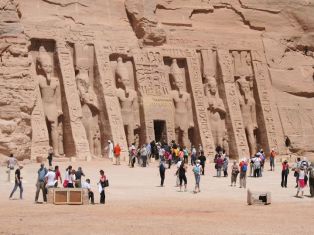Hatshepsut Temple
Queen Hatshepsut ordered the temple to be built to commemorate it. The temple of Hatshepsut is a funeral temple, located in the west bank in the mountains of the city of AL- Qurna.
Engineer Sinmout supervised the construction of Hatshepsut temple, influenced by the temple of Montu-Hotep in the decoration of the balconies, also excluded the obelisks, pyramids and burial chamber of this temple and designed in the form of three flats. The temple was not used in the rituals of Hatshepsut or her father (Thutmose I) but was dedicated to the worship of the great god of Amoun and four compartments were built to the worship of god (Ra Hor Akhty god of Heliopolis, Anubis god of dead and Hathor is lady of the west). The construction of the temple began in the eighth or ninth year of the reign of Hatshepsut used the good limestone coming from quarries of mount Silsla in southern Edfu.
The temple of Hatshepsut represents the manifestations of family’s hostility and conflict when Hatshepsut took control of the reign of Egypt from Thutmose III due to his young age. So his followers broke the statues of Hatshepsut and wiped out her names from the monuments and many of constructions owned by it, sometimes put the name of Thutmose instead of Hatshepsut. The temple was called in the reign of Hatshepsut (holy of holies Amoun); also it was called in the reign of Ramssess (the holy spot), while El-Deir Albahary is a modern Arabic name dating back to the seventh century AD when the Christians used this temple as a monastery. The ascending road that was characterized by statues of Queen Hatshepsut in the form of sphinx on each side was coming out of the courtyard and reach to the first flat.
It has a large open courtyard with some trees that came from Bunt land by Hatshepsut and two water tanks in the form of a T-shaped two-legged horizontally, growing papyrus.
recommended tours

Private Half - Day Tour: Philae Temple - Unfinished Obelisk & High Dam



